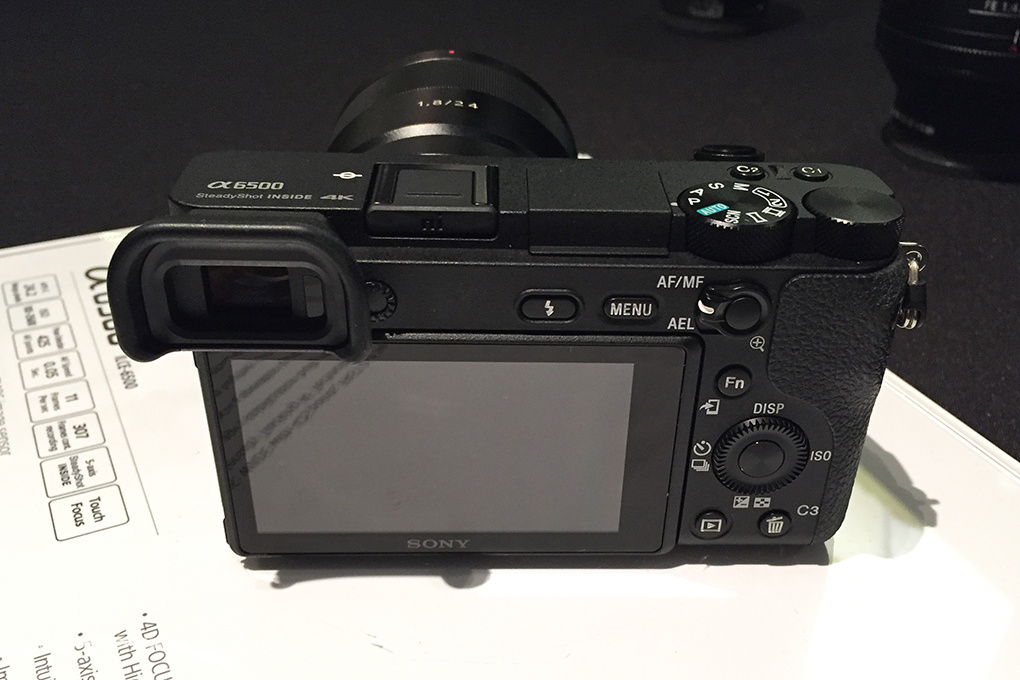Today Sony announced a new addition to their APS-C E-mount camera line, the a6500. This 24.2-megapixel camera takes over as the flagship model for Sony's crop sensor interchangeable lens system bodies. There are many upgraded features over the a6300 that was first announced just in February of this year, so let's dive right in.
The Sony a6500 features a 24.2-megapixel APS-C Exmor CMOS sensor and uses the BIONZ X image processor. Alongside the newly developed front-end LSI, the new a6500 offers an ISO range of 100-51,200 and Sony claims superior image and video quality when pushing the light sensitivity. Sony also says that the new LSI brings a better continuous shooting experience by expanding the buffer size. With the a6500 a user can now shoot 11 frames per second for 20 seconds.
Like the a6300, the new a6500 has the same 4D Focus system built in. The 4D Focus system combines phase detect autofocus with contrast autofocus to lock in on moving subjects as fast as 0.05 seconds. The a6500 has 425 phase detect autofocus points and are used for Sony's High density tracking technology. The autofocus system allows for Eye AF in AF-C mode and autofocus in focus magnifier modes.
While nearly the same exterior size as the a6300, the a6500 internally now features 5-axis in-body image stabilization thanks to a complete redesign under the hood. There is a 5 step improvement to shutter speeds with the 5-axis system. If using an E-mount lens that has OSS (Optical SteadyShot) built in, the a6500 will compensate shake for horizontal, vertical, and roll axes while the lens will compensate for pitch and yaw.
One of the most welcomed features of the Sony a6500 is the newly added touchscreen. Now one can control focus on the LCD screen with just a tap. Additionally, when using the viewfinder to compose, the LCD screen will act as a touchpad where a user can drag their finger to select different focus points.
The Sony a6500 does internal 4K video in Super 35, utilizing the full width of the sensor. Like the a6300, the video is oversampled by recording in 6K with full pixel readout and no binning to produce higher-quality 4K UHD files. The XAVC S codec is used to record up to 100 Mbps 4K video, or 50 Mbps Full HD. Gaining the ability to touch focus and using the in-body image stabilization is going to please many videographers who already appreciated the a6300.
The Sony a6500 is priced at $1,399 USD and will be available in November. Pre-ordering will begin online at B&H starting on October 10.










I'm confused? Thank god I waited to invest in the a6300. Now I can get it cheap.
To clarify, the a6500 isn't replacing the a6300. Sony is still going to sell the a6000, a6300, and now adding the a6500 to the line.
The bigger buffer is definitely a benefit, although I wonder if you still have to wait for the camera to clear the buffer into the card before shooting again. That was one of the worst features of the A6000.
I knew hardware development moved fast, but dang, I just bought the a6300 last April! Time to baby it until November and hope I can still sell it for a decent price.
Ah, well I would love to have this especially the large buffer which really buggs me on my A5000 but tbh I cant justify the cost for it. But I'm still excited, its cool tech and it will drop the price of the A6000 even more which means I can get that one instead :)
Not impressed. It has a ton of tech in it but that's about it. What about dual card slots, better egnonomics/controls and high quality APS-C glass? I'd rather have the original A6000 and these three improvements than this.
WHY no ISO 25? Please give us some very low ISO settings so we don't have to add Neutral Density filters to the optical path.
Performance aside, i will say that this has got to be one of the ugliest looking cameras i've ever seen. Where Fuji's look like Jaguar's, Sony's look like dump trucks.